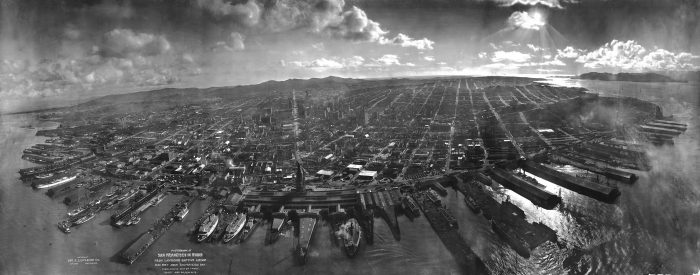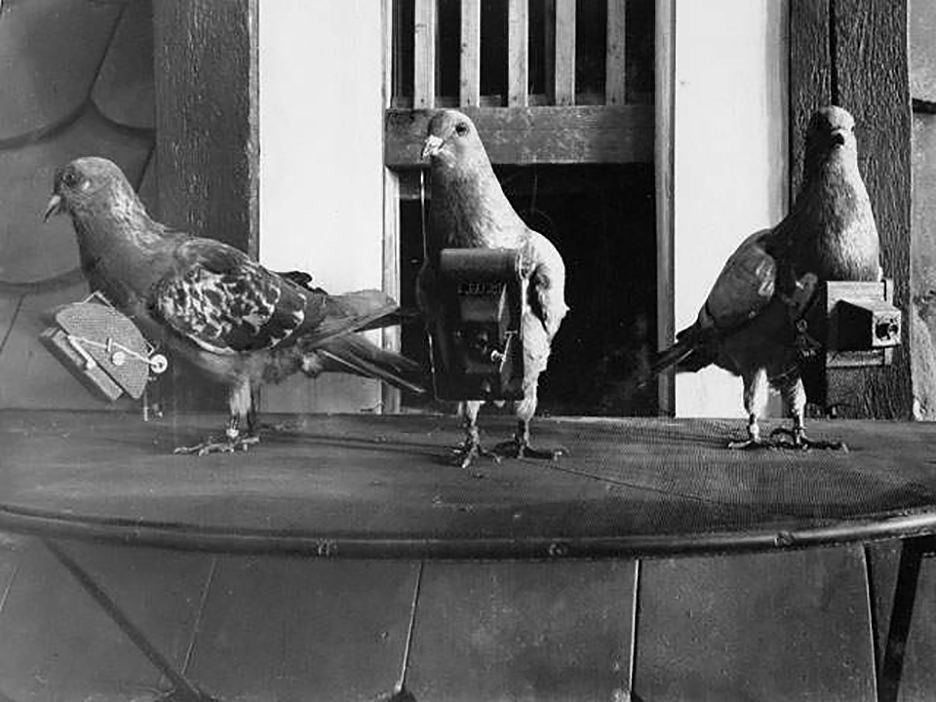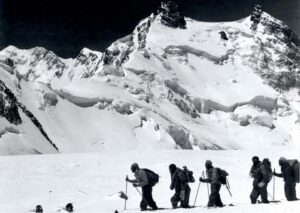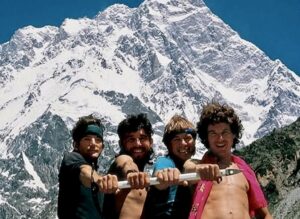Before epic drone shots and NASA satellite images, aerial photography was experimental. Here, we look at some of the earliest methods and pioneers.

An illustration of Nadar taking photos from his balloon. Photo: Honore Daumier/Brooklyn Museum
Balloons
In the 1850s, Nadar, an eccentric Frenchman, decided he wanted to capture an image of Paris from the air. In 1858, he got into a balloon and rose 80m above Petit-Bicêtre, just outside Paris.
Nadar took a picture with a camera that used the collodion wet process. It requires a darkroom environment that Nadar had to create in his balloon’s basket. He was successful, but unfortunately, the photo later disappeared from history. Nevertheless, Nadar may have taken the first-ever aerial photograph.
In 1860, just two years after Nadar’s pioneering feat, James Wallace Black snapped the first successful aerial photograph in the United States aboard a hot air balloon called The Queen of the Air.

1860 aerial photo of Boston. Photo: James Wallace Black
Black had previously attempted a flight over Rhode Island but couldn’t produce a clear photograph. After his failed attempts, he finally took an image of Boston. He called the photo “Boston, as the eagle and the wild goose see it.”
Black inspired subsequent photographers and reconnaissance tactics during the Civil War.

In 1882, Cecil Shadbolt took the first surviving aerial photo of the British Isles, a view of part of London. He used a hot-air balloon.
Kites
In the 1880s, English meteorologist E.D. Archibald and French photographer Arthur Batut attached cameras to kites in England and France respectively.
At the turn of the century, American photographer George Lawrence used this same method to show the devastation of San Francisco after the 1906 earthquake and subsequent fire. He used around 17 kites to lift his camera over 600m into the air. This was perhaps the earliest example of disaster photography. Photos like these helped shape public opinion, evoking sympathy and understanding of distant events.

Devastation in San Francisco after an earthquake and a fire. Photo: George Lawrence
Pigeons
Pigeons have carried messages for centuries. But in 1907, Julius Neubronner decided to use his pigeons (which usually delivered medications to his patients) to take pictures from the air.
Neubronner created a little harness and attached a tiny 70mm camera to a pigeon. The camera was on a timer.
Early in the 20th century, the German army used the same method for wartime reconnaissance, forming the Bavarian Pigeon Corps.
Planes and rockets
Some inventors and photographers thought of using rockets. The first designs appeared in 1888 by Amedee Denisse. Alfred Nobel (of Nobel Prize fame) took the first picture using a rocket.
In 1903, German pioneer Alfred Maul created a picture-taking rocket that soared almost 800m, propelled by gunpowder.
The first official aerial photograph from a plane was in 1908. Wilbur Wright flew a plane in Le Mans, France while photographer L.P. Bonvillain took a photo.
During the First World War, planes on both sides fought and did reconnaissance missions. By the end of the war, they had taken more than 500,000 photos.
Space photography
This first photo taken from space was in 1946. Soldiers at New Mexico’s White Sands Missile Range attached a camera to a V-2 rocket, which reached a height of 105km.

First photo of Earth from space. Photo: White Sands Missile Range/Applied Physics Laboratory






